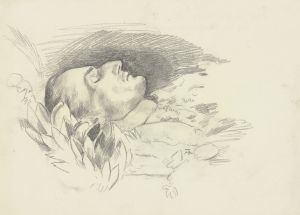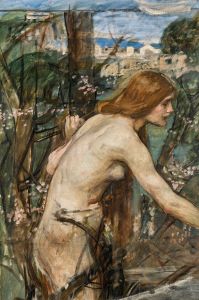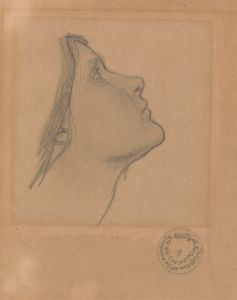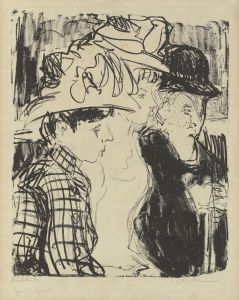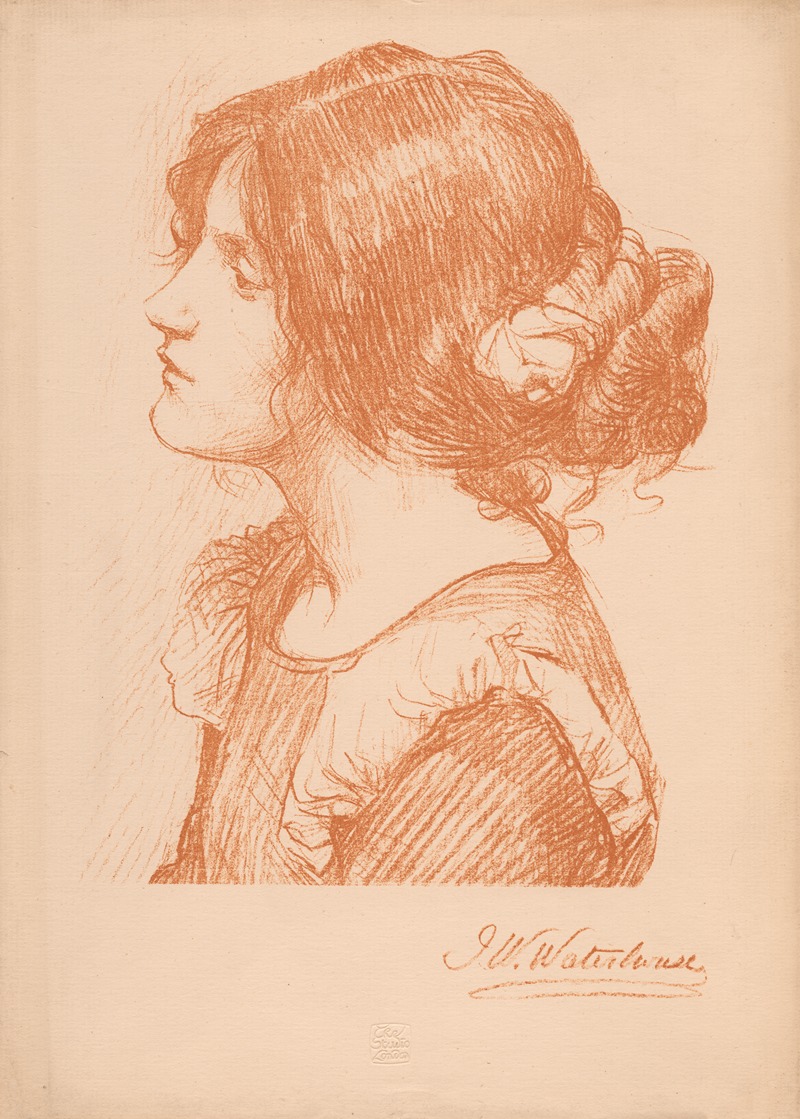
Head of a Woman
A hand-painted replica of John William Waterhouse’s masterpiece Head of a Woman, meticulously crafted by professional artists to capture the true essence of the original. Each piece is created with museum-quality canvas and rare mineral pigments, carefully painted by experienced artists with delicate brushstrokes and rich, layered colors to perfectly recreate the texture of the original artwork. Unlike machine-printed reproductions, this hand-painted version brings the painting to life, infused with the artist’s emotions and skill in every stroke. Whether for personal collection or home decoration, it instantly elevates the artistic atmosphere of any space.
"Head of a Woman" is a painting by the renowned British artist John William Waterhouse, who is best known for his works in the Pre-Raphaelite style. Waterhouse was born in 1849 in Rome to English parents and spent much of his career in London. He is celebrated for his depictions of women from both classical mythology and literature, often characterized by their ethereal beauty and emotional depth.
"Head of a Woman" exemplifies Waterhouse's skill in capturing the delicate features and expressions of his subjects. Although the exact date of this painting is not well-documented, it is believed to have been created during the late 19th or early 20th century, a period when Waterhouse was at the height of his artistic prowess. The painting is a study of a woman's head, focusing on her facial features and expression, which is a common practice among artists to explore human emotion and anatomy.
Waterhouse's technique in "Head of a Woman" reflects his mastery of the Pre-Raphaelite style, characterized by its attention to detail, vibrant colors, and emphasis on naturalism. The painting likely showcases his typical use of soft brushwork and a delicate palette to create a lifelike representation of the subject. The woman's expression is serene and contemplative, a hallmark of Waterhouse's ability to convey complex emotions through subtle facial cues.
The subject of the painting, as with many of Waterhouse's works, remains anonymous, allowing viewers to focus on the universal qualities of beauty and introspection rather than the identity of the individual. This approach is consistent with the Pre-Raphaelite movement's interest in idealized beauty and timeless themes.
Waterhouse's work, including "Head of a Woman," has been celebrated for its ability to blend classical themes with a modern sensibility, making his paintings both accessible and enduring. His fascination with mythology and literature often provided the backdrop for his portraits, though "Head of a Woman" appears to be more of a standalone study rather than part of a larger narrative.
The painting is part of a broader body of work that has cemented Waterhouse's reputation as one of the leading figures in the late Pre-Raphaelite movement. His ability to capture the subtleties of human expression and his dedication to the aesthetic principles of the movement have made his works highly sought after by collectors and art enthusiasts alike.
While specific details about "Head of a Woman" such as its current location or provenance may not be widely documented, the painting remains an important example of Waterhouse's artistic legacy. His works continue to be studied and admired for their technical skill and emotional resonance, ensuring that his contributions to the art world endure well beyond his lifetime.







